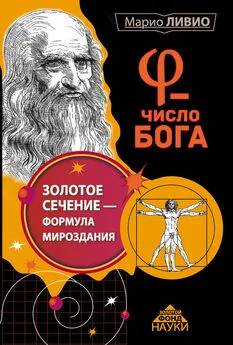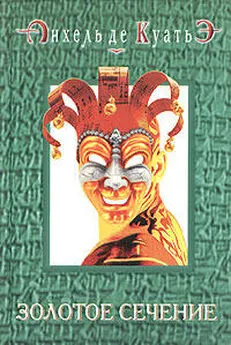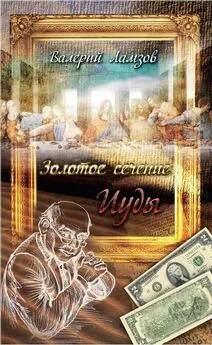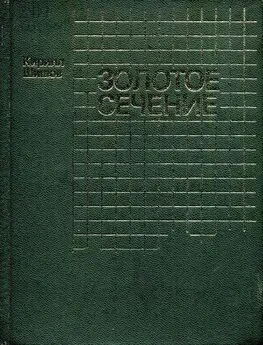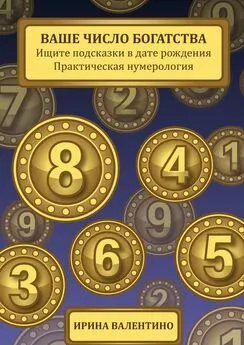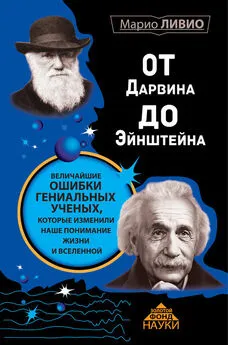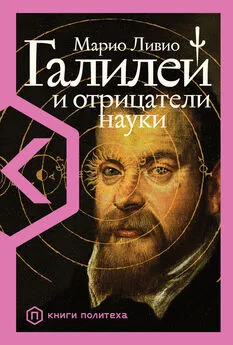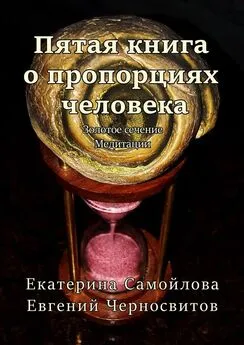Марио Ливио - φ – Число Бога. Золотое сечение – формула мироздания
- Название:φ – Число Бога. Золотое сечение – формула мироздания
- Автор:
- Жанр:
- Издательство:Литагент «АСТ»c9a05514-1ce6-11e2-86b3-b737ee03444a
- Год:2015
- Город:Москва
- ISBN:978-5-17-094497-2
- Рейтинг:
- Избранное:Добавить в избранное
-
Отзывы:
-
Ваша оценка:
Марио Ливио - φ – Число Бога. Золотое сечение – формула мироздания краткое содержание
Как только не называли это загадочное число, которое математики обозначают буквой φ: и золотым сечением, и числом Бога, и божественной пропорцией. Оно играет важнейшую роль и в геометрии живой природы, и в творениях человека, его закладывают в основу произведений живописи, скульптуры и архитектуры, мало того – ему посвящают приключенческие романы! Но заслужена ли подобная слава? Что здесь правда, а что не совсем, какова история Золотого сечения в науке и культуре, и чем вызван такой интерес к простому геометрическому соотношению, решил выяснить известный американский астрофизик и популяризатор науки Марио Ливио. Увлекательное расследование привело к неожиданным результатам…
Увлекательный сюжет и нетривиальная развязка, убедительная логика и независимость суждений, малоизвестные факты из истории науки и неожиданные сопоставления – вот что делает эту научно-популярную книгу настоящим детективом и несомненным бестселлером.
φ – Число Бога. Золотое сечение – формула мироздания - читать онлайн бесплатно ознакомительный отрывок
Интервал:
Закладка:
Stewart, I. Life’s Other Secret. New York: John Wiley & Sons, 1998.
Thompson, D. W. On Growth and Form. New York: Dover Publications, 1992.
Vajda, S. Fibonacci & Lucas Numbers, and the Golden Section. Chichester: Ellis Horwood Limited, 1989.
Vorob’ev, N. N. Fibonacci Numbers. New York: Blaisdell, 1961.
Arasse, D. Leonardo Da Vinci. New York: Konecky & Konecky, 1998.
Beer, A. and Beer, P., eds., Kepler: Four Hundred Years. Vistas in Astronomy, vol. 18, New York: Pergamon Press, 1975.
Calvesi, M. Piero Della Francesca. New York: Rizzoli, 1998.
Caspar, M. Kepler. New York: Dover Publications, 1993.
Cromwell, P. R. Polyhedra. Cambridge: Cambridge University Press, 1997.
Gingerich, O. “Kepler, Galilei, and the Harmony of the World”, in Music and Science in the Age of Galileo, ed. V. Coeltho, 45–63. Dordrecht: Kluwer, 1992.
Gingerich, O. “Kepler, Johannes”, in Dictionary of Scientific Biography, ed. Charles Coulston Gillespie, vol. 7, 289–312. New York: Scribners, 1973.
Ginzburg, C. The Enigma of Piero. London: Verso, 2000.
James, J. The Music of the Spheres. New York: Copernicus, 1993.
Jardine, N. The Birth of History and Philosophy of Science: Kepler’s “A Defense of Tycho against Ursus” with Essays on Its Provenance and Significance. Cambridge: Cambridge University Press, 1984.
Kepler, J. The Harmony of the World. Philadelphia: American Philosophical Society, 1997.
Kepler, J. Mysterium Cosmographicum. New York: Abaris Books, 1981.
Leonardo Da Vinci. NY: Artabras/Reynal and Company, 1938.
MacKinnon, N. “The Portrait of Fra Luca Pacioli”, Mathematical Gazette, 77 (1993): 130–219.
Martens, R. Kepler’s Philosophy and the New Astronomy. Princeton, NJ: Princeton University Press, 2000.
O’Connor, J. J., and Robertson, E. F. www-history.mcs.st-andrews.ac.uk/history/Mathematicians/Pacioli.html/Durer.html.
Pacioli, L. Divine Proportion. Paris: Librairie du Compagnonnage, 1988.
Pauli, W. “The Influence of Archetypal Ideas on the Scientific Theories of Kepler”, in The Interpretation of Nature and the Psyche, 147–240. New York: Parthenon, 1955.
Stephenson, B. The Music of the Spheres: Kepler’s Harmonic Astronomy. Princeton, NJ: Princeton University Press, 1994.
Strieder, P. Albrecht Dürer. New York: Abaris Books, 1982.
Taylor, R. E. No Royal Road. Chapel Hill: University of North Carolina Press, 1942.
Voelkel, J. R. Johannes Kepler. Oxford: Oxford University Press, 1999.
Westman, R. A. “The Astronomer’s Role in the Sixteenth Century: A Preliminary Survey”, History of Science, 18 (1980): 105–147.
Altschuler, E. L. Bachanalia. Boston: Little, Brown and Company, 1994.
d’Arcais, F. F. Giotto. New York: Abbeville Press Publishers, 1995.
Bellosi, L. Cimabue. New York: Abbeville Press Publishers, 1998.
Bergamini, D. Mathematics. New York: Time Incorporated, 1963.
Bois, Y.-A., Joosten, J., Rudenstine, A. Z., and Janssen, H. Piet Mondrian. Boston: Little, Brown and Company, 1995.
Boring, E. G. A History of Experimental Psychology. New York: Appleton-Century-Crofts, 1957.
Bouleau, C. The Painter’s Secret Geometry. New York: Harcourt, Brace & World, 1963.
Curchin, L., and Fischler, R. “Hero of Alexandria’s Numerical Treatment of Division in Extreme and Mean Ratio and Its Implications”, Phoenix, 35 (1981): 129–133.
Curtis, W. J. R. Le Corbusier: Ideas and Forms. Oxford: Phaidon, 1986.
Duckworth, G. E. Structural Patterns and Proportions in Vergil’s Aeneid. Ann Arbor: University of Michigan Press, 1962.
Emmer, M. The Visual Mind. Cambridge, MA: MIT Press, 1993.
Fancher, R. E. Pioneers of Psychology. New York: W. W. Norton & Company, 1990.
Fechner, G. T. Vorschule der Aesthetik. Leipzig: Breitkopf & Härtel, 1876.
Fischler, R. “How to Find the ‘Golden Number’ Without Really Trying”, Fibonacci Quarterly, 19 (1981): 406–410.
Fischler, R. “On the Application of the Golden Ratio in the Visual Arts”, Leonardo, 14 (1981): 31–32.
Fischler, R. “The Early Relationship of Le Corbusier to the Golden Number”, Environment and Planning B, 6 (1979): 95–103.
Godkewitsch, M. “The Golden Section: An Artifact of Stimulus Range and Measure of Preference”, American Journal of Psychology, 87 (1974): 269–277.
Hambidge, J. The Elements of Dynamic Symmetry. New York: Dover Publications, 1967.
Herz-Fischler, R. “An Examination of Claims Concerning Seurat and the Golden Number”, Gazette des Beaux-Arts, 125 (1983): 109–112.
Herz-Fischler, R. “Le Corbusier’s ‘regulating lines’ for the villa at Garches (1927) and other early works”, Journal of the Society of Architectural Historians, 43 (1984): 53–59.
Herz-Fischler, R. “Le Nombre d’or en France de 1896 а 1927”, Revue de l’Art, 118 (1997): 9–16.
Hockney, D. Secret Knowledge. New York: Viking Studio, 2001.
Howat, R. Debussy in Proportion. Cambridge: Cambridge University Press, 1983.
Kepes, G. Module, Proportion, Symmetry, Rhythm. New York: George Braziller, 1966.
Larson, P. “The Golden Section in the Earliest Notated Western Music”, Fibonacci Quarterly, 16 (1978): 513–515.
Le Courbusier. Modulor I and II. Cambridge, MA: Harvard University Press, 1980.
Lendvai, E. Béla Bartók: An Analysis of His Music. London: Kahn & Averill, 1971.
Lowman, E. A. “Some Striking Proportions in the Music of Bela Bartók”, Fibonacci Quarterly, 9 (1971): 527–537.
Marevna. Life with the Painters of La Ruche. New York: Macmillan Publishing Co., 1974.
McManus, I. C. “The Aesthetics of Simple Figures”, British Journal of Psychology, 71 (1980): 505–524.
Nims, J. F. Western Wind. New York: McGraw-Hill, 1992.
Nuland, S. B. Leonardo da Vinci. New York: Viking, 2000.
Osborne, H. ed. The Oxford Companion to Art. Oxford: Oxford University Press, 1970.
Putz, J. F. “The Golden Section and the Piano Sonatas of Mozart”, Mathematics Magazine, 68 (1995): 275–282.
Sadie, S. The New Grove Dictionary of Music and Musicians. New York: Grove, 2001.
Schiffman, H. R., and Bobka, D. J. “Preference in Linear Partitioning: The Golden Section Reexamined”, Perception & Psychophysics, 24 (1978): 102–103.
Schillinger, F. Joseph Schillinger. New York: Da Capo Press, 1976.
Schillinger, J. The Mathematical Basis of the Arts. New York: Philosophical Library, 1948.
Schwarz, L. “The Art Historian’s Computer”, Scientific American (April 1995): 106–111.
Somfai, L. Béla Bartók: Compositions, Concepts, and Autograph Sources. Berkeley: University of California Press, 1996.
Svensson, L. T. “Note on the Golden Section”, Scandinavian Journal of Psychology, 18 (1977): 79–80.
Tatlow, R., and Griffiths, P. “Numbers and Music”, in The New Grove Dictionary of Music and Musicians, 18 (2001): 231–236.
Watson, R. I. The Great Psychologists. Philadelphia: J. B. Lippincott Company, 1978.
White, M. Leonardo the First Scientist. London: Little, Brown and Company, 2000.
Woodworth, R. S., and Schlosberg, H. Experimental Psychology. New York: Holt, Rinehart and Winston, 1965.
Zusne, L. Visual Perception of Form. New York: Academic Press, 1970.
Cohen, J., and Stewart, I. The Collapse of Chaos. Discovering Simplicity in a Complex World. New York: Penguin Books, 1995.
Fischer, R. Financial Applications and Strategies for Traders. New York: John Wiley & Sons, 1993.
Gardner, M. Penrose Tiles to Trapdoor Ciphers. New York: W. H. Freeman and Company, 1989.
Gleick, J. Chaos. New York: Penguin Books, 1987.
Lesmoir-Gordon, N., Rood, W., and Edney, R. Introducing Fractal Geometry. Cambridge: Icon Books, 2000.
Mandelbrot, B. B. Fractal Geometry of Nature. New York: W. H. Freeman and Company, 1988.
Mandelbrot, B. B. “A Multifractal Walk Down Wall Street”, Scientific American (February 1999): 70–73.
Matthews, R. “The Power of One”, New Scientist, July 10, 1999, 27–30.
Peitgen, H.-O., Jürgens, H., and Saupe, D. Chaos and Fractals. New York: Springer-Verlag, 1992.
Peterson, I. “Fibonacci at Random”, Science News, 155 (1999): 376–377.
Peterson, I. The Mathematical Tourist. New York: W. H. Freeman and Company, 1988.
Peterson, I. “A Quasicrystal Construction Kit”, Science News, 155 (1999): 60–61.
Prechter, R. R. Jr., and Frost, A. J. Elliot Wave Principle. Gainesville, GA: New Classics Library, 1978.
Schroeder, M. Fractals, Chaos, Power Laws. New York: W. H. Freeman and Company, 1991.
Steinhardt, P. J., Jeong, H. C., Saitoh, K., Tanaka, M., Abe, E., and Tsai, A. P. “Experimental Verification of the Quasi-Unit-Cell Model of Quasicrystal Structure”, Nature, 396 (1998): 55–57.
Stewart, I. Does God Play Dice? London: Penguin Books, 1997.
Walser, H. The Golden Section. Washington, DC: The Mathematical Association of America, 2001.
Baierlein, R. Newton to Einstein: The Trail of Light. Cambridge: Cambridge University Press, 1992.
Barrow, J. D. Impossibility. Oxford: Oxford University Press, 1998.
Chandrasekhar, S. Truth and Beauty. Chicago: University of Chicago Press, 1987.
Chown, M. “Principia Mathematica III”, New Scientist, August 25, 2001, 44–47.
Davis, P. J., and Hersh, R. The Mathematical Experience. Boston: Houghton Mifflin Company, 1998.
Dehaene, S. The Number Sense. Oxford: Oxford University Press, 1997.
Deutsch, D. The Fabric of Reality. New York: Penguin Books, 1997.
Hersh, R. What Is Mathematics, Really? New York: Oxford University Press, 1997.
Hill, T. P. “The First Digit Phenomenon”, American Scientist, 86 (1998): 358–363.
Kleene, S. C. “Foundations of Mathematics”, Chicago: Encyclopaedia Britannica (1971), 1097–1103.
Lakatos, I. Mathematics, Science and Epistemology. Cambridge: Cambridge University Press, 1978.
Lakoff, G., and Nüсez, R. Where Mathematics Comes From. New York: Basic Books, 2000.
Livio, M. The Accelerating Universe. New York: John Wiley & Sons, 2000.
Maor, E. To Infinity and Beyond: A Cultural History of the Infinite. Princeton, NJ: Princeton University Press, 1987.
Matthews, R. “The Power of One”, New Scientist, July 10, 1999, 26–30.
Penrose, R. The Emperor’s New Mind. Oxford: Oxford University Press, 1989.
Penrose, R. Shadows of the Mind. Oxford: Oxford University Press, 1994.
Читать дальшеИнтервал:
Закладка:
